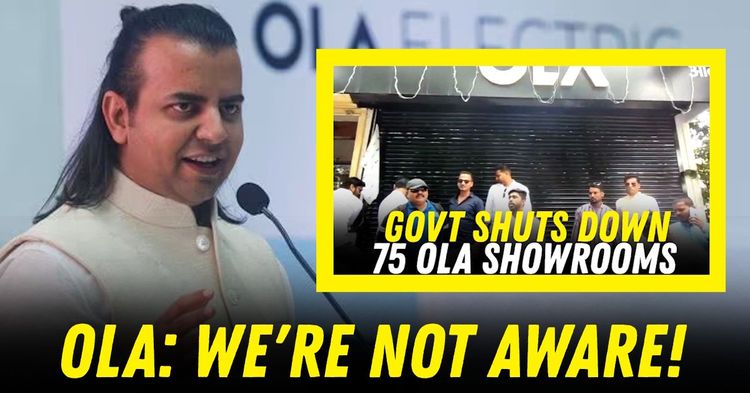Ola Electric Under SEBI Lens For Alleged 'Insider Trading': Report


Ola Electric, one of India’s leading electric vehicle (EV) manufacturers, finds itself embroiled in a regulatory storm as the Securities and Exchange Board of India (SEBI) investigates allegations of insider trading and questionable disclosures. The company, led by high-profile founder Bhavish Aggarwal, has faced mounting scrutiny over its financial practices and transparency, with recent developments threatening to undermine investor confidence.

The market regulator is reportedly examining two key issues. First, it is probing potential insider trading activities between October and December 2024, where certain transactions by company executives or related parties allegedly occurred before material information became public.
While details remain undisclosed, such practices, if proven, could indicate unfair advantage in stock trading. Second, SEBI is scrutinising discrepancies in Ola’s February 2025 sales disclosures.
The company claimed to have sold over 25,000 electric scooters that month, but government data from the VAHAN portal showed only 8,600 registrations. Ola attributed this gap to a backlog caused by terminating contracts with registration vendors, but regulators suspect misleading reporting.

At the heart of the controversy is Ola’s decision to include undelivered vehicle bookings in its sales figures. Nearly half of the reported 25,000 units comprised pre-orders for third-generation e-scooters and the yet-to-be-launched Roadster X motorcycle.
The Ministry of Road Transport and Highways intervened, directing Ola to revise its disclosures to reflect only invoiced and delivered vehicles. This move came after the Ministry of Heavy Industries flagged concerns about the validity of Ola’s claims, warning of “adverse action” if explanations were unsatisfactory.
Compounding these issues, Ola’s former registration vendor Rosmerta Digital Services filed an insolvency petition in March 2025, alleging unpaid dues of ₹17–18 crore. Ola terminated its contract with Rosmerta in February to bring registrations in-house, aiming to cut costs. However, the transition led to operational bottlenecks, exacerbating registration backlogs. While Ola settled the dues later, the episode highlighted cash flow strains and strained supplier relationships.
Investor sentiment has swung wildly amid the turmoil. Shares initially dropped to a historic low of ₹45.55 in April 2025 but rebounded 6% after Ola clarified that its February sales figures represented “paid and confirmed orders”. However, the stock remains 41% down year-to-date, reflecting lingering doubts. On 2 May 2025, shares traded flat at ₹48.45 even as broader markets rallied, signalling cautious investor behaviour.

This isn’t Ola’s first brush with SEBI. In January 2025, the regulator reprimanded the company for violating disclosure norms by sharing material information on social media before informing exchanges. The current probe expands this scrutiny, with SEBI reviewing past filings for inconsistencies. Ola’s aggressive growth claims were questioned by others in the industry too, noting that operational missteps – including showroom closures in Maharashtra over certification lapses – contradict its public narrative of expansion.
The outcomes of SEBI’s investigations could redefine Ola’s future. If insider trading charges stick, penalties might include fines or trading bans for involved individuals. Meanwhile, sales reporting discrepancies could lead to restatements of financials, potentially eroding market trust. Industry experts at CarToq suggest that Ola’s challenges stem from prioritizing growth over governance – a risky strategy in the tightly regulated automotive sector.
For a company once hailed as India’s answer to Tesla, the current crisis underscores the perils of rapid scaling without robust compliance frameworks. As regulators tighten oversight, Ola’s ability to navigate these headwinds will determine whether it remains a market leader or becomes a cautionary tale in India’s EV revolution.